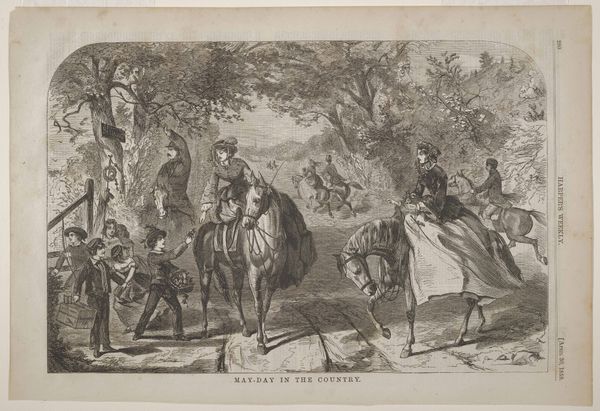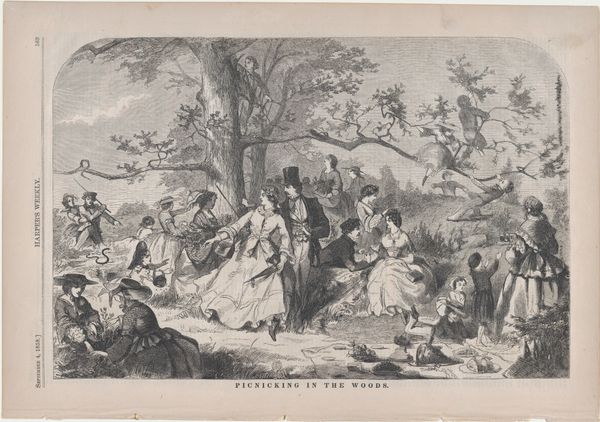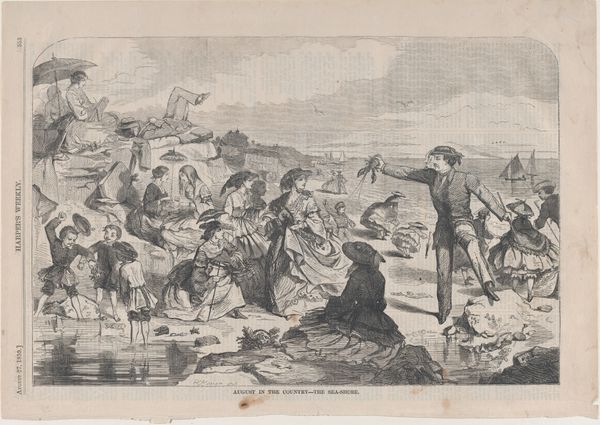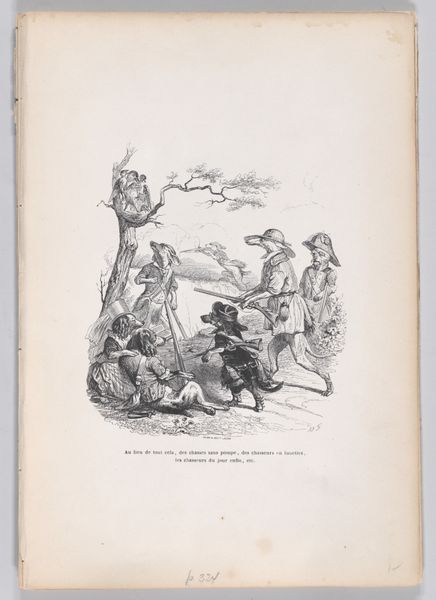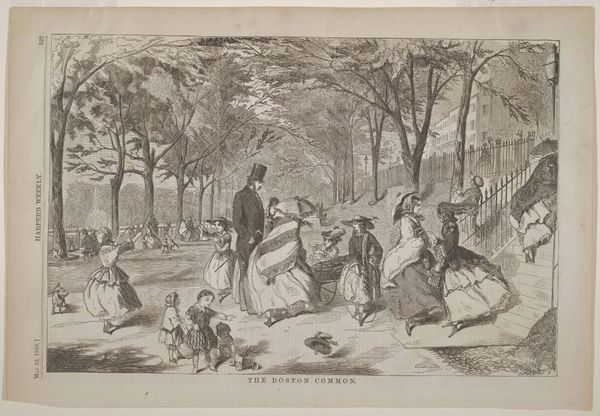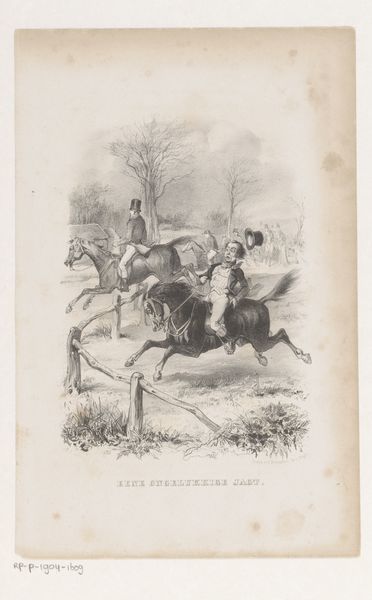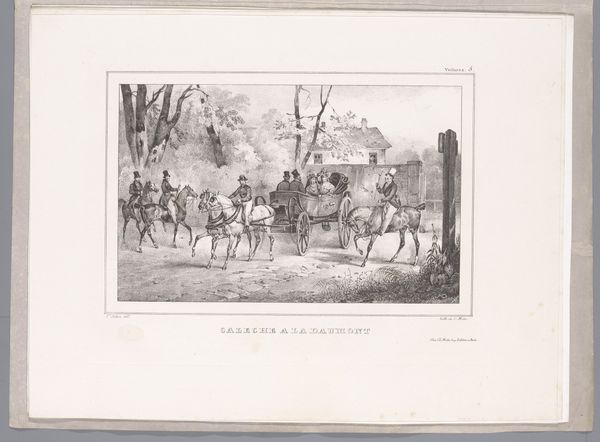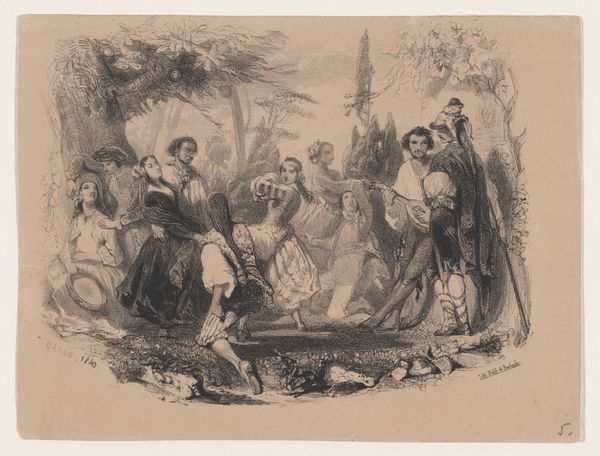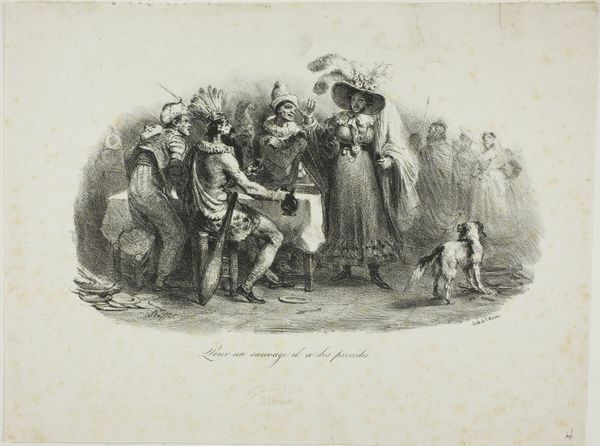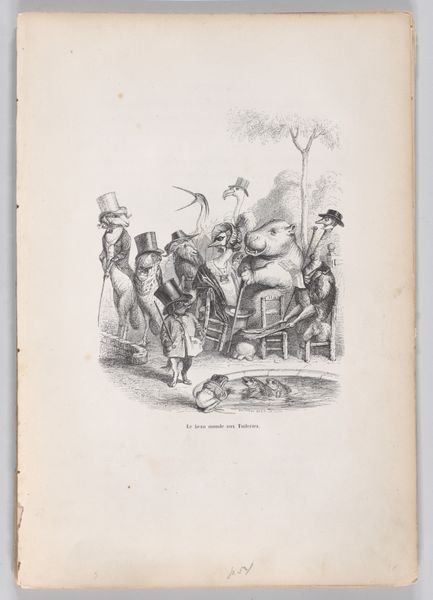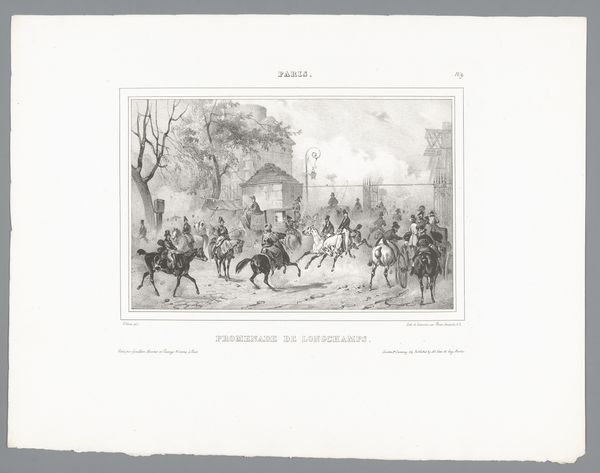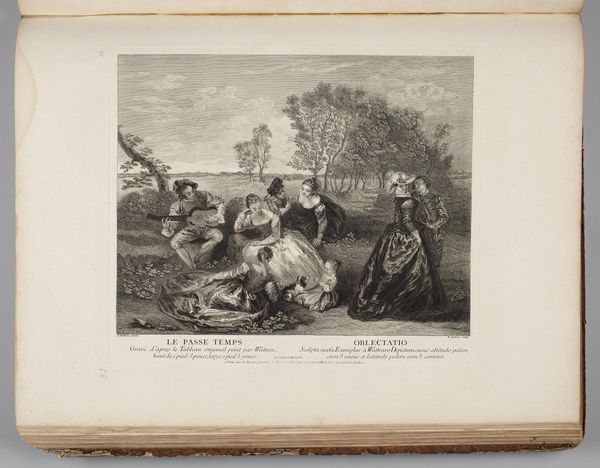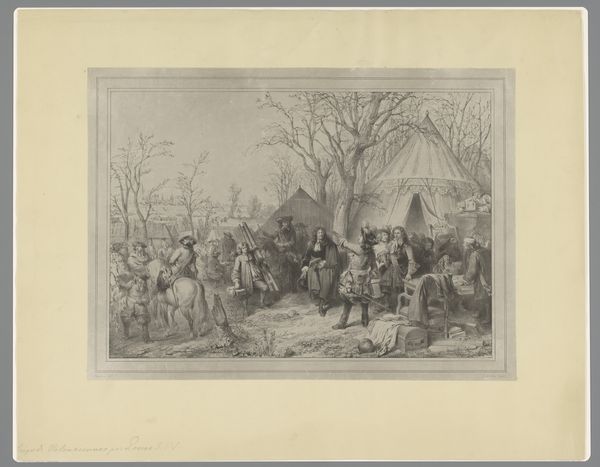
May-Day in the Country (from "Harper's Weekly," Vol. III) 1859
0:00
0:00
Dimensions: image: 9 1/8 x 13 3/4 in. (23.2 x 34.9 cm) sheet: 11 9/16 x 16 1/8 in. (29.3 x 41 cm)
Copyright: Public Domain
Curator: Winslow Homer’s “May-Day in the Country,” from Harper's Weekly, published in 1859, is an intriguing glimpse into mid-19th-century rural America. This woodcut presents a scene brimming with people and horses on what seems like a festive occasion. Editor: It certainly has a lively feeling! The high contrast of the black and white creates a dynamic effect, and the composition is wonderfully busy, directing my eyes all over the place. The materiality gives it the aesthetic feeling of raw and vintage illustration. Curator: Exactly! "May-Day," a tradition with pagan roots, was a celebration of spring and fertility. Think of it as a momentary loosening of social constraints before the Victorian era's intensification of rigid rules. You can see riders parade on horseback; some scholars interpret such acts as a way to solidify racial divides, since equestrian mastery was largely limited to elite white people. How interesting that those elite, horseriding people, are framed, while men are lingering at a sort of border. What do you think that division means here? Editor: A clear statement in social hierarchy! Semiotically, the border creates a distance between those walking who may wish to be riding, highlighting access or lack thereof in class standing. Homer, the artist, makes intentional use of positive and negative space here. It’s less about individual character and more about the effect on the system. Curator: I completely agree, it emphasizes power dynamics operating within the scene! Consider how this imagery circulated widely, shaping and reinforcing popular notions of race and class, while simultaneously promoting the notion of pastoral simplicity to his Northern, urban readership. One cannot assume a straightforward, celebratory reading when considering the societal context. Editor: The image overall relies heavily on implied lines, suggesting a world brimming with activity just beyond the frame. The monochromatic choice flattens everything, highlighting pattern rather than depth. The artist isn’t inviting us into their reality; they are very pointedly observing it in the structure of the thing. Curator: Indeed. This is a print from Harper’s Weekly; its role as both a cultural record and a tool to shape public opinion is impossible to ignore. Recognizing May-Day in the Country through this lens can reshape one’s perspective, can't it? Editor: Absolutely. Considering the lines, and composition forces me to reflect on social narrative as well as what sort of reality Homer’s work wants to transmit.
Comments
No comments
Be the first to comment and join the conversation on the ultimate creative platform.
